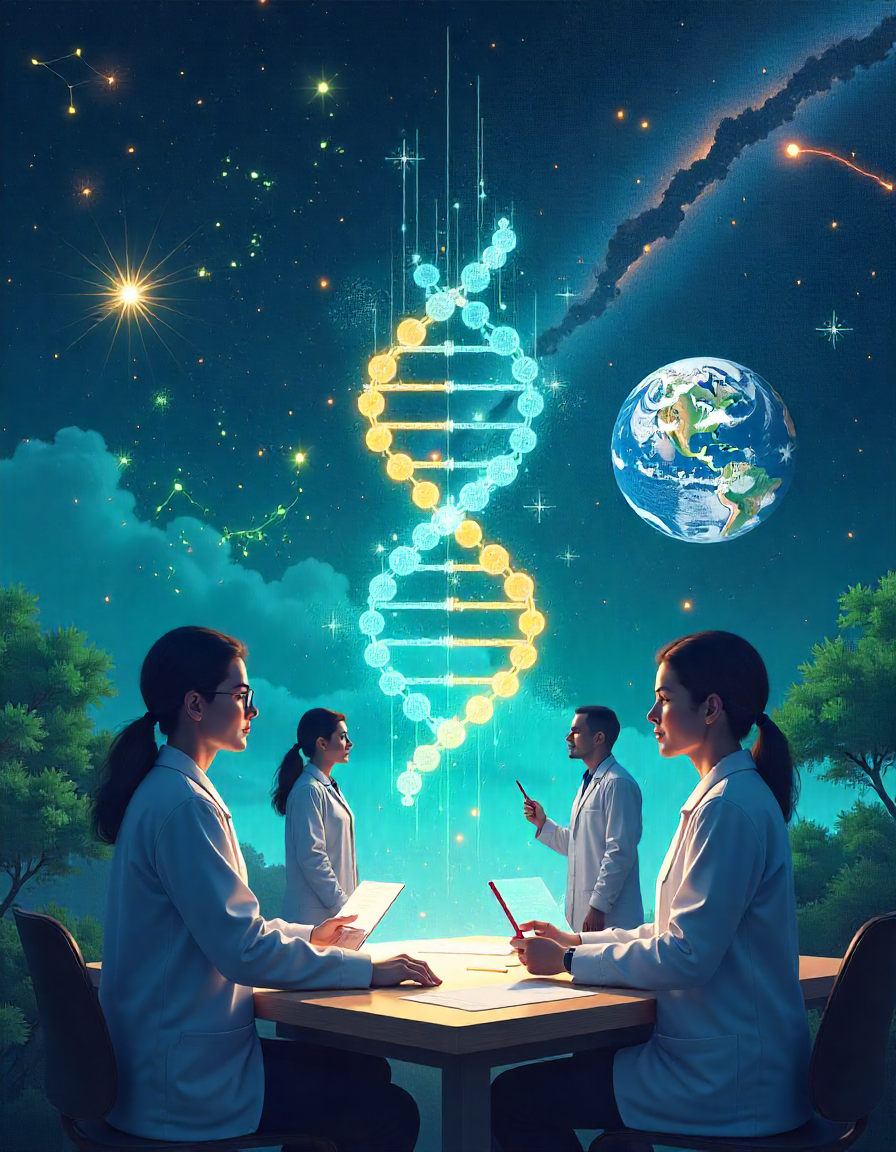Science is more than a collection of facts tucked away in textbooks or labs—it is a living language through which humanity interprets reality. Every time researchers decode a gene, launch a spacecraft, or measure particles smaller than atoms, they contribute another sentence to the story of existence. Far from being an abstract endeavor, scientific progress filters into daily life in ways many take for granted, from the food on the table to the energy powering homes.
This article explores the dynamic journey of science across multiple domains—its history, breakthroughs, ethical dilemmas, and future directions. By weaving together examples from biology, physics, astronomy, and environmental studies, we will see how the pursuit of knowledge is not just about solving puzzles but about reshaping the human experience.
A Journey Through Scientific Revolutions
When looking back at the history of science, it becomes clear that progress is rarely linear. Instead, it unfolds through revolutions. The shift from a geocentric to a heliocentric universe in the 16th century was one such revolution. By challenging established worldviews, figures like Copernicus and Galileo reframed humanity’s place in the cosmos.
Another seismic change came during the 19th and 20th centuries with Darwin’s theory of evolution and Einstein’s relativity. These ideas redefined life and space-time itself, showing that science does not merely add new facts but often dismantles old paradigms. Each revolution extended humanity’s horizon, revealing deeper mysteries waiting just beyond the edge of current understanding.
The Invisible Worlds of Modern Biology
Modern biology has revealed dimensions of life invisible to the naked eye. The discovery of DNA in the mid-20th century opened the door to genetics, transforming medicine, agriculture, and even criminal justice. Today, gene editing tools like CRISPR allow researchers to “rewrite” portions of DNA, holding potential for curing hereditary diseases.
Yet, this power also raises questions. Should scientists alter the genomes of unborn children? How do we balance the promise of eliminating genetic disorders with the risk of unintended consequences? These questions illustrate how science is not a neutral machine but a deeply human process, requiring moral judgment alongside technical skill.
Physics: From Quarks to Quantum Puzzles
Few areas of science capture the imagination like physics. On the smallest scales, physicists study quarks, gluons, and neutrinos—the building blocks of everything we see. On the largest scales, they chart galaxies and black holes, exploring forces that sculpt the universe. Between these extremes lies quantum mechanics, a field so counterintuitive that even experts admit it challenges ordinary logic.
Quantum mechanics has not only revolutionized theory but also practical technology. Lasers, semiconductors, and even MRI machines rely on principles discovered in quantum research. As scientists push toward quantum computing, they hope to harness these strange rules to solve problems conventional computers could never touch, from drug discovery to climate modeling.
Space: Humanity’s Next Frontier
Space exploration remains one of the most visible symbols of scientific ambition. The Apollo missions of the 20th century proved that humans could step onto another celestial body. Today, efforts focus on Mars colonization, lunar bases, and asteroid mining. Beyond prestige, these missions serve practical purposes, such as testing sustainable habitats or finding resources critical for future industries.
At the same time, telescopes like the James Webb Space Telescope peer deeper into the universe than ever before. They allow astronomers to study galaxies formed billions of years ago, essentially looking back in time. Such observations don’t just satisfy curiosity—they provide insights into how planets form, how life might emerge, and what fate awaits the cosmos itself.
Environmental Science: Navigating a Fragile Planet
Perhaps no branch of science feels more urgent today than environmental studies. Climate change, biodiversity loss, and pollution are challenges that can no longer be ignored. Science provides the data to understand these issues and the tools to address them, from renewable energy technologies to conservation strategies.
For instance, satellite imaging allows scientists to monitor deforestation in real time, while climate models project scenarios that policymakers can use to prepare for future risks. But the effectiveness of these tools depends on whether society listens. The intersection of science, politics, and economics reveals that knowledge alone is insufficient; it must be paired with collective action.
Ethical Horizons: When Discovery Outpaces Regulation
One recurring theme in science is that innovation often moves faster than ethics. Nuclear physics gave rise not only to medical imaging but also to atomic weapons. Biotechnology now promises life-saving therapies but also opens the door to bioengineering with unforeseen risks. Artificial intelligence, while not a traditional “hard science,” similarly demonstrates how technology born in labs can reshape society before safeguards are in place.
The responsibility, therefore, lies not only with scientists but also with policymakers and citizens. Public understanding of science is crucial. When people engage with the implications of discovery, they contribute to building guardrails that ensure knowledge serves humanity rather than harms it.
The Human Side of Science
Behind every experiment lies a story of human persistence. Scientific progress often depends on years of failure, countless revisions, and moments of doubt. The discovery of penicillin, for example, happened only after Alexander Fleming noticed mold in a petri dish—a reminder that chance and curiosity often go hand in hand.
Furthermore, science thrives on collaboration. Large projects like the Human Genome Project or the Large Hadron Collider involve thousands of researchers across continents, showing that discovery is rarely a solitary act. It is a collective endeavor that transcends borders, languages, and cultures.
The Future: Science Without Boundaries
Looking ahead, science will likely become even more interdisciplinary. Fields such as biophysics, astrochemistry, and computational neuroscience illustrate how combining perspectives yields richer insights. The future scientist may not specialize narrowly but instead navigate fluidly across biology, physics, and data science.
Emerging technologies like quantum computing, nanotechnology, and synthetic biology promise to redefine what is possible. Meanwhile, the quest to understand consciousness, dark matter, and the origin of life continues. Each unanswered question serves as an invitation, reminding us that science is not a finished book but a conversation stretching across generations.
Conclusion: Why Science Matters to Everyone
Science is not the property of laboratories or universities—it belongs to everyone. Its insights shape our health, our environment, our technologies, and our shared future. Understanding science does not require advanced degrees; it requires curiosity, openness, and a willingness to engage with the unknown.
As discoveries accelerate, society faces a choice: treat science as a distant enterprise or embrace it as a collective journey. The latter path demands responsibility but also offers the greatest rewards—knowledge that empowers, innovations that uplift, and a deeper appreciation of the universe we inhabit.






